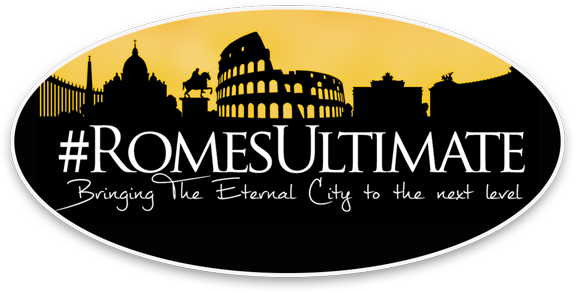Colosseum & Arch of Constantine
 The Colosseum also known as the Flavian Amphitheatre is the largest amphitheatre ever built. The Colosseum could hold, it is estimated, between 50,000 and 80,000 spectators, was used for gladiatorial contests and public spectacles such as mock sea battles, animal hunts, executions, re-enactments of famous battles, and dramas based on Classical mythology.
The Colosseum also known as the Flavian Amphitheatre is the largest amphitheatre ever built. The Colosseum could hold, it is estimated, between 50,000 and 80,000 spectators, was used for gladiatorial contests and public spectacles such as mock sea battles, animal hunts, executions, re-enactments of famous battles, and dramas based on Classical mythology.
The Arch of Constantine is a triumphal arch situated between the Colosseum and the Palatine Hill. It was erected by the Roman Senate to commemorate Constantine I’s victory over Maxentius at the Battle of Milvian Bridge in 312. Dedicated in 315, it is the largest Roman triumphal arch.
Circus Maximus

First constructed in the 6th century BCE the circus was a chariot racetrack in Rome. It was also used for other public events such as the Roman Games and gladiator fights and was last used for chariot races in the 6th century CE. It was partially excavated in the 20th century CE and then remodelled but it continues today as one of the modern city’s most important public spaces, hosting huge crowds at music concerts and rallies.
Baths of Caracalla

Among the most splendid monuments of ancient Rome is the building known as the Thermae Antoninianae, or, as we call them, “the baths of Caracalla”. They were the second largest Roman public baths, built between AD 212 and 217, during the reigns of Septimius Severus and Caracalla Today, the roofs have collapsed, many walls have fallen down, the statues have been removed, and the decoration is gone, but yet, the ruins belong to the most impressive remains of Antiquity.
Porta San Sebastiano
 This is the largest and one of the best-preserved gates passing through the Aurelian Walls in Rome. Originally known as the Porta Appia, the gate sat astride the Appian Way. During the Middle Ages probably it was also called Accia (or Dazza or Datia), a name whose etymology is quite uncertain, but arguably associated with the river Almone, called “acqua Accia”, that flowed nearby.The present name is attested only since the second half of 15th century, due to the vicinity to the Basilica of San Sebastiano and its catacombs.
This is the largest and one of the best-preserved gates passing through the Aurelian Walls in Rome. Originally known as the Porta Appia, the gate sat astride the Appian Way. During the Middle Ages probably it was also called Accia (or Dazza or Datia), a name whose etymology is quite uncertain, but arguably associated with the river Almone, called “acqua Accia”, that flowed nearby.The present name is attested only since the second half of 15th century, due to the vicinity to the Basilica of San Sebastiano and its catacombs.
Via Appia Antica
 The Appian Way was one of the earliest and strategically most important Roman roads of the ancient republic. It connected Rome to Brindisi, in southeast Italy. The road is named after Appius Claudius Caecus, the Roman censor who began and completed the first section as a military road to the south in 312 BC during the Samnite Wars. Via Appia was used as a main route for military supplies since its construction for that purpose in 312 B.C. It was the first long road built specifically to transport troops outside the smaller region of greater Rome.
The Appian Way was one of the earliest and strategically most important Roman roads of the ancient republic. It connected Rome to Brindisi, in southeast Italy. The road is named after Appius Claudius Caecus, the Roman censor who began and completed the first section as a military road to the south in 312 BC during the Samnite Wars. Via Appia was used as a main route for military supplies since its construction for that purpose in 312 B.C. It was the first long road built specifically to transport troops outside the smaller region of greater Rome.
Aqueducts Park
 The Parco degli Acquedotti is part of the Appian Way Regional Park and is of approximately 240 ha. The park is named after the aqueducts that go through it. It is crossed on one side by the Aqua Felix and also contains part of the Aqua Claudia and the remains of Villa delle Vignacce to the North West. A short stretch of the original Roman Via Latina can also be seen. Some of Rome’s most famous emperors had a hand in the aqueduct. Emperor Caligula started building (38 AD), Claudius completed it (52 AD), Vespasian restored it (71 AD) and Titus restored it again (81 AD).
The Parco degli Acquedotti is part of the Appian Way Regional Park and is of approximately 240 ha. The park is named after the aqueducts that go through it. It is crossed on one side by the Aqua Felix and also contains part of the Aqua Claudia and the remains of Villa delle Vignacce to the North West. A short stretch of the original Roman Via Latina can also be seen. Some of Rome’s most famous emperors had a hand in the aqueduct. Emperor Caligula started building (38 AD), Claudius completed it (52 AD), Vespasian restored it (71 AD) and Titus restored it again (81 AD).






